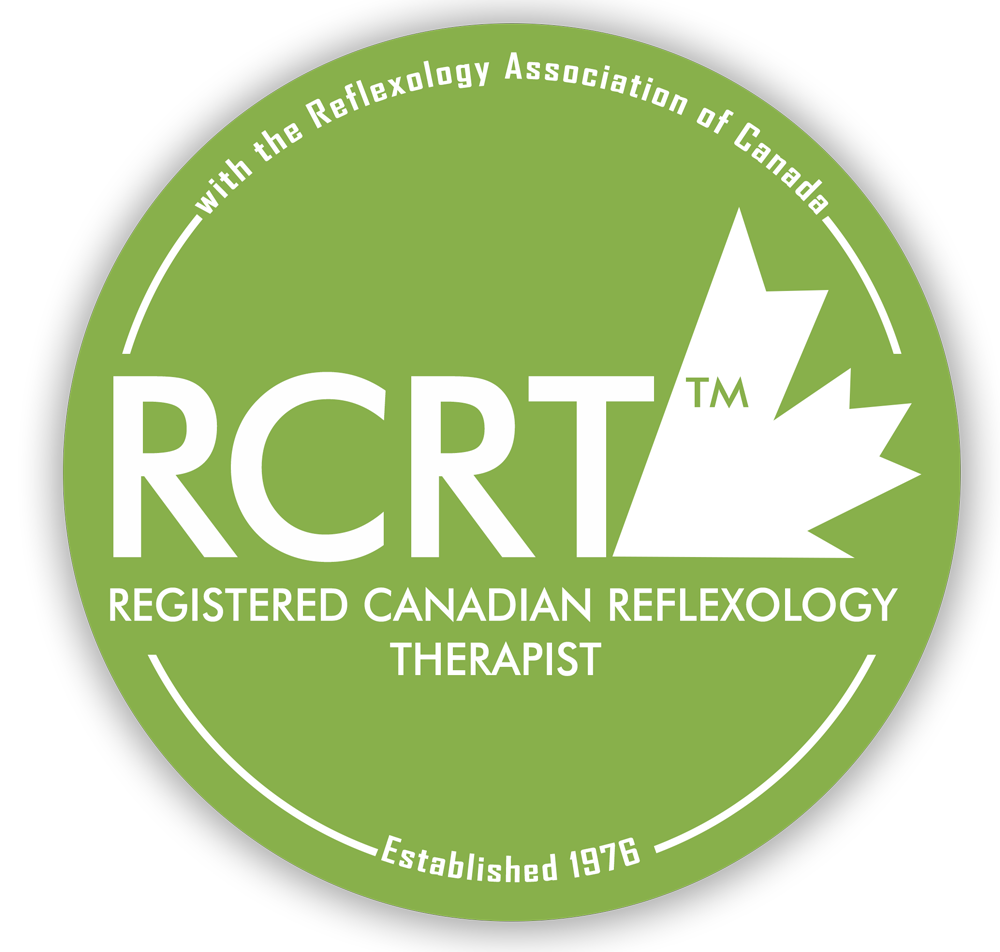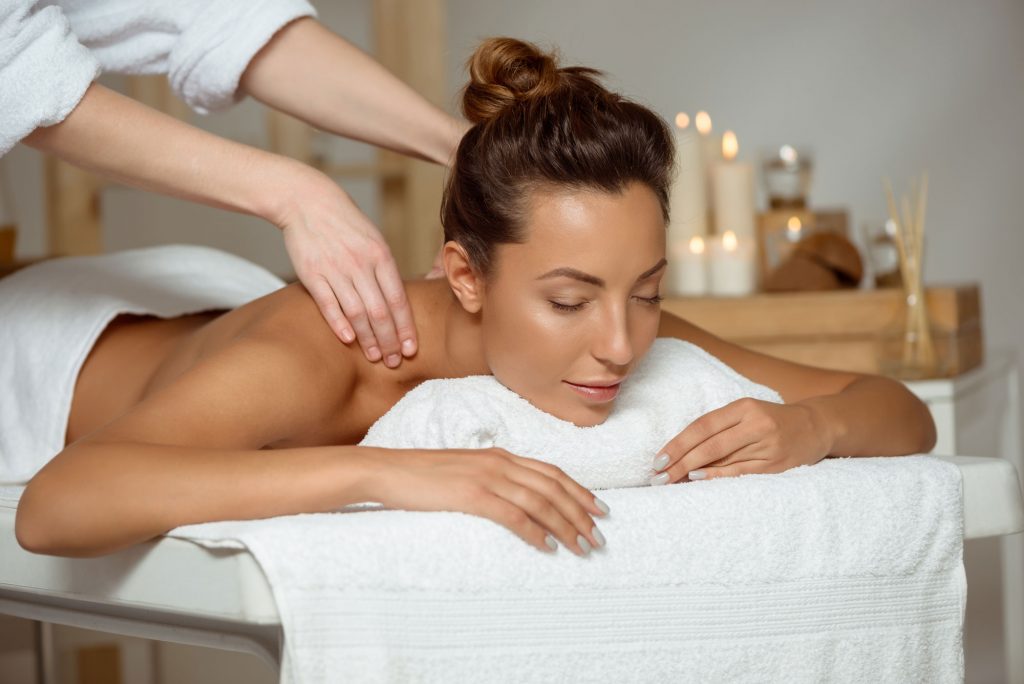
What is Massage Therapy?
What other conditions can massage help?
- Arthritis
- Carpal Tunnel Syndrome
- Cramps
- Diabetes
- Fibromyalgia
- Headaches
- Parkinson’s Disease
- Plantar Fasciitis
- Rotator Cuff
- Shin Splints
- Sleep Problems
- TMJ
- Whiplash
Benefits of Massage
Therapeutic massage is an important part of your health maintenance plan that helps you to:
- Relieve Stress
- Improve Circulation
- Improve joint mobility
- Strengthen immune system function
- Increase lymphatic drainage
- Reduce tension within muscles
- Increase body awareness
- Release trapped toxins in the tissue
- Alleviate muscles aches and pains
- Alleviate muscle tightness
- Reduce Blood Pressure
- Alleviate discomfort during pregnancy
- Relieve tension-related headaches and effects of eyestrain
- Enhance the health and nourishment of skin
- Improve posture
- Reduce muscle spasms
- Improve athletic performance
- Help with adjustments
Book an Advanced Massage Therapy session
- Hot Oil Scalp Massage
- Hot Stone Massage Therapy
- Raindrop Massage Therapy
- Reflexology
Hot Oil Scalp Massage
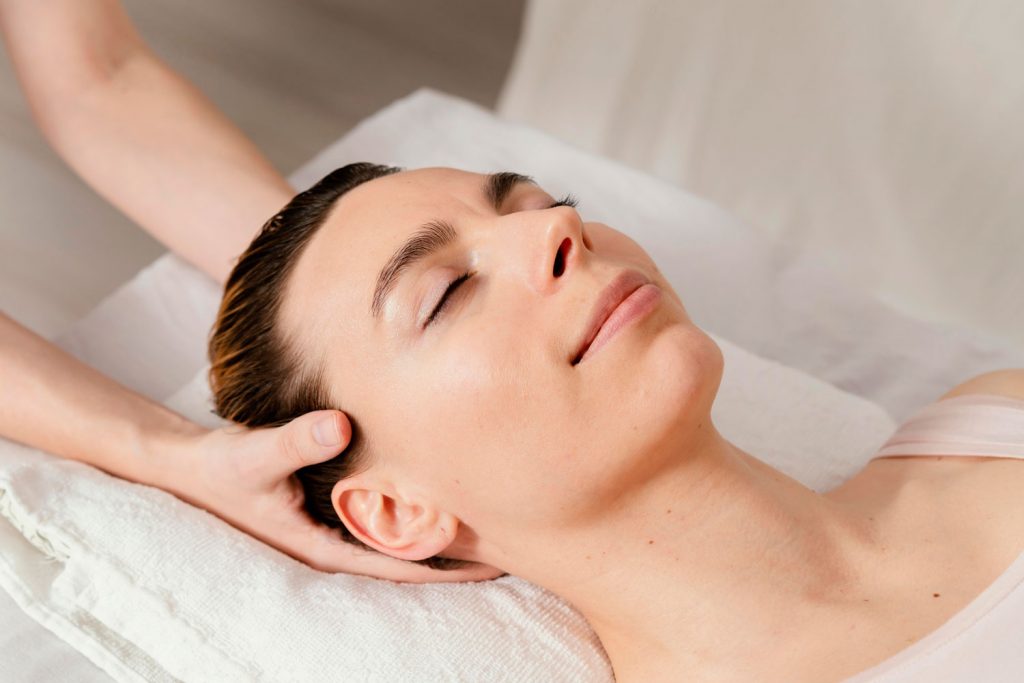
Treatments can be performed while the client is lying down or in a seated
position. Hot Oil Scalp Massage techniques are complemented by the use of
essential oils for improved circulation, lymphatic drainage and increased
mobility in the upper back, shoulders, neck, face, jaw and head. This massage
accesses pressure points along the treatment area to soothe and stimulate
the muscles, ligaments and joints and can be performed either gently or more
vigorously.
Hot Oil Scalp Massage is gaining recognition as an effective therapy in the
treatment of chronic pain and localized mobility issues. Through focusing on
the connective tissues in the treatment areas, this massage can also be
helpful in the treatment of whiplash, TMJ, headaches and chronic pain.
The treatment includes massage to the scalp, face, jaw, neck and shoulders
and involves pouring warm oil on the scalp and through the hair. These oils
used are also very therapeutic for the hair and it is suggested to leave them in
for up to 24 hours for maximum benefit. Best to book your treatment on a day
or time when you will not need to remove the oils immediately after treatment.
Some of the conditions that can be treated using Hot Oil Scalp Massage
include:
- Migraines
- Headaches
- Anxiety
- Insomnia
- Depression
- Sinusitis
- TMJ (Jaw Pain)
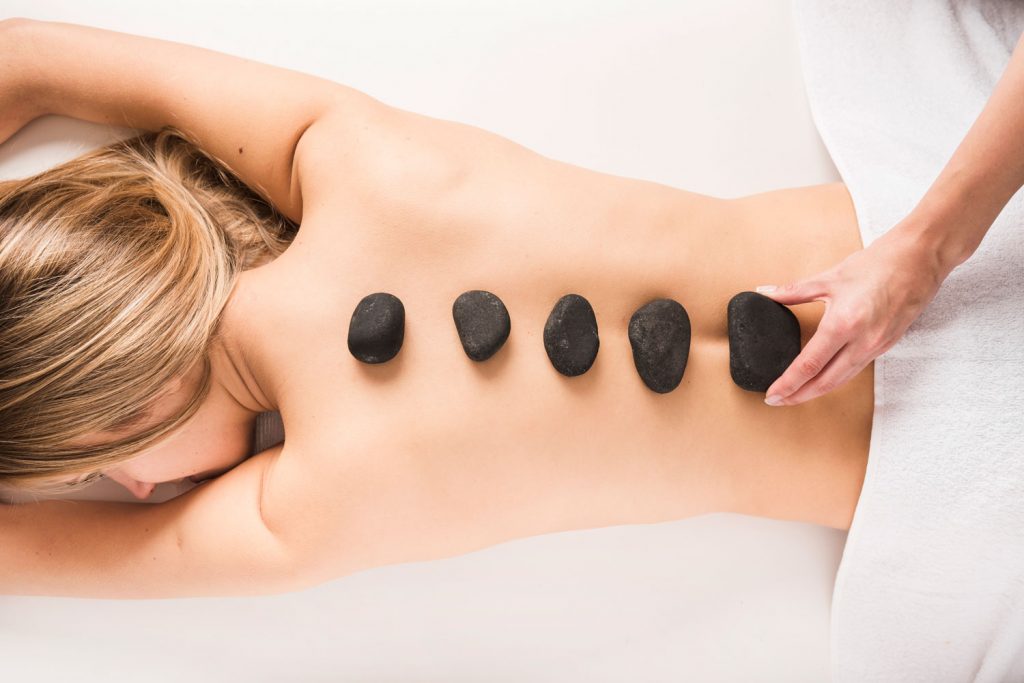
Hot Stone Massage Therapy
The heat of the stones increases blood flow, improving the nutrient and waste
exchange, helping to detox the body – which in turn can accelerate the
healing process. It further helps to calm the sympathetic nervous system
(fight or flight response), creating general relaxation, enabling the therapist to
“get into” hard to reach areas.
Different shaped stones are used to target different areas and responses.
Larger flat stones are used for general smoothing and easing. While more
angled stones are used for specific problem spots. Some people find the
weight of the stones create a unique and calming effect, while others may
experience an energy healing effect from them. Hot Stone Massage can
increase the benefits received by regular massage and is a very effective
treatment for relieving both physical and mental stress.
Raindrop Massage Therapy
Ken Krieger, D.C. Chiropractor states:
"As a chiropractor, I believe that the dramatic results of Raindrop Technique are enough for me to rewrite the books on scoliosis. As we continue to unravel the science of how oils influence the body and spine, we will rewrite the present mechanical science of neurology. In its place will be a complete system that blends the nervous system, immune system, emotions and structure of the body."

What is the Raindrop Technique?
The Raindrop Technique is a very relaxing form of aromatherapy (by use of essential oils) that concentrates on the spine.
The essential oils used in this bodywork are of the highest standards in the industry and are extremely concentrated – e.g., one drop of peppermint oil equals 25 cups of peppermint tea. Essential oils bring oxygen and nutrients deep into our cells, resulting in mental, emotional and physical balance. Others who have experienced this type of bodywork have expressed profound changes in their body, as well as a more positive outlook in life.
Why you would want Raindrop?
Raindrop uses pure essential oils that assist with the removal of viruses and bacteria from the spinal area. This encourages a stronger immune system, fewer health problems, less pain in the back and reduced stress levels.
Raindrop is an excellent treatment to incorporate into your detoxification program and can also help you immensely in bringing relief to:
- Tissue toxicity or poisoning
- Trauma and emotional and/or physical stress
- back pain, injuries, or falls
- Immune system issues
- Facilitate tissue clearing and bring calmness to the body, mind & spirit
- Facilitate trauma and emotional release and feel freer and joyous
- Assist the body in correcting defects in the curvature of the spine
Benefits:
- Colds/flus disappear
- Reduction or elimination of back pain
- Reduction in disfigurement (scoliosis)
- Relief of tension and headaches
- Relaxation and invigoration
- Increase in energy level and stamina
- Increase in immune function
- Elevation of mood and emotions
- Tail bone correction to further enhance the immune system
- Treatment for specific health conditions - e.g. heart & circulation, brain, hormonal balance, colon, joint & bones, liver, lung, longevity plus Parkinson's, MS and autonomic nervous system.
What to expect during a Raindrop treatment?
You will disrobe and lie face down on the table. The Raindrop Technique practitioner will apply nine different essential oils along your spine and massage them in while applying a variety of hand techniques, each to help the body receive the different oils. Generally, the oils are applied by allowing them to drip from the bottle, which is held approximately 6” above the back – hence the term “raindrop.”
A base oil is then applied to dilute the potency of the essential oils. Heat may be applied and you will need to let your Raindrop Technique practitioner know if you become too hot. The practitioner will finish the treatment by working on your feet and neck to balance your energies.
After your Raindrop treatment
After your raindrop treatment, you will be very relaxed and need to drink a lot of water to flush out any released toxins.
Ask your Raindrop Technique practitioner when you should shower; you will want to leave the oils on as long as possible for best absorption and maximum benefit.
How often to receive the Raindrop Technique
Whether or not you chose the raindrop treatment to resolve health concerns will determine how often you should receive it.
Discuss with your Raindrop Technique practitioner to design a schedule suited to your needs and goals.
How can Reflexology help you?
Following illness, stress, injury, or disease, the body is in a state of “imbalance” and vital energy pathways are blocked, preventing the body from functioning effectively.
When one part of the body is not functioning well, the effect is felt throughout the entire system.
Sensitive, trained hands can detect tiny deposits and imbalances in the feet and by working on these points, the therapist can release blockages and restore the free flow of energy to the whole body. Tensions are eased, circulation and elimination are improved. The body’s own ability to heal itself is encouraged and natural balance is restored.
What happens in a Reflexology session?
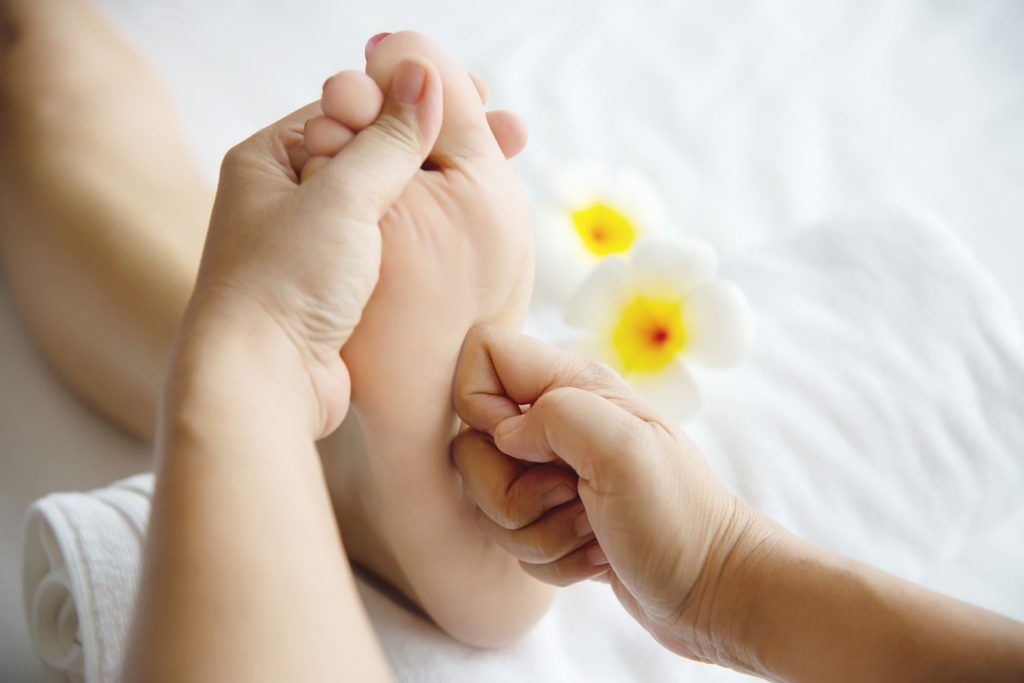
What is Reflexology?
Reflexology is a natural, non-invasive healing art that is based on the principle that there are reflexes in the feet, hands, and ears that correspond to every part of the body.
Through the application of pressure on these reflexes – using the thumb, the fingers, or the hands – reflexology relieves tension, improves circulation, and helps promote the natural functioning of the body.
Essentially, reflexology helps to balance the physical, mental, and emotional aspects of your whole body. If an organ or gland is under- or over-active, reflexology can help return it to a normal level.
The client is relaxing in a comfortable position. Although most therapists work on the feet, some also work on the hands or ears.
Beginning with the right side, all reflex points on both sides are stimulated as the body is considered to be a whole unit.
Sessions usually last from 45 to 60 minutes. Reflexology is safe for everyone, although pressure and session length may vary depending on the age, sensitivity, or health of the client.
Choosing a Therapist
Professional therapists are certified (have proven that they have attained high standards of training), registered (are committed to following established standards of practice; necessarily maintain and further their education) members of a recognized reflexology organization.
Make sure that your therapist is a professional!
